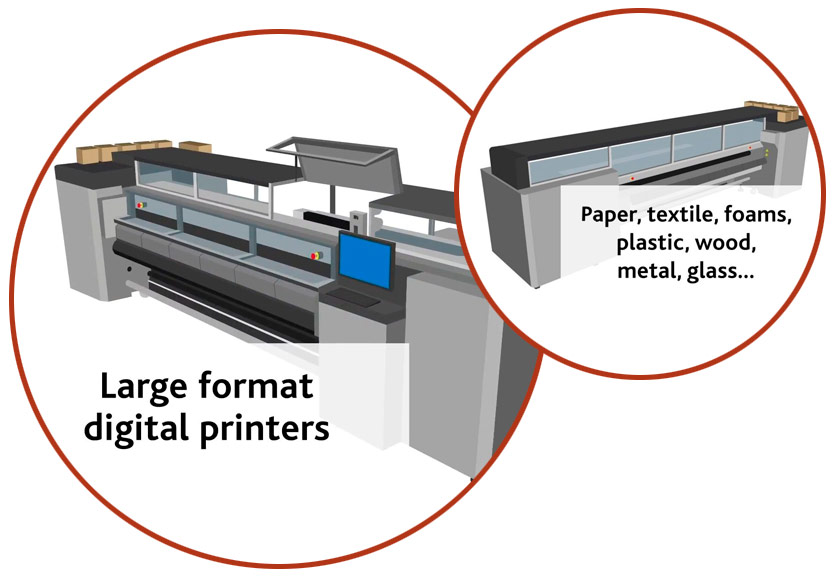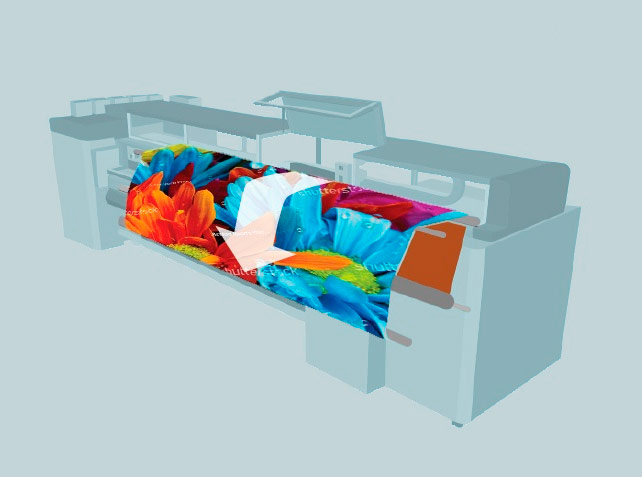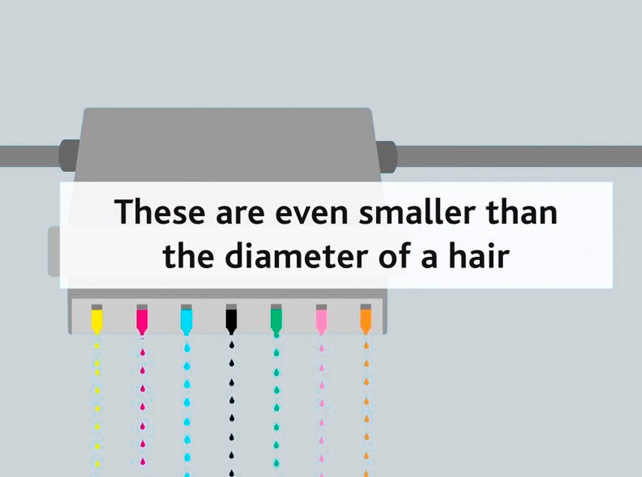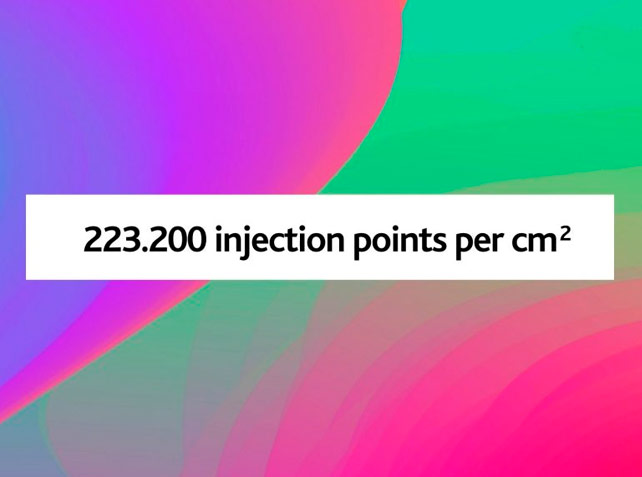A large format digital printer is essential in the world we live in, surrounded by images. We find them in more and more applications: large posters, architecture, decoration, billboards, shop windows, street furniture, etc… But have you ever wondered how they are printed?
The answer to how these images are produced lies in the large format digital printer. A machine that allows you to create large images with impressive quality and definition. Let’s take a look at how these machines work.
A large format digital printer can be of different types: Depending on the size, they can be up to 5 metres wide. They also depend on the material to be printed: rigid or flexible. Among them, paper, textile, canvas, plastic, wood, metal, glass, etc.
But if there is one thing these printers have in common, it is that they all use the same printing technique: inkjet.

How do I print a large image?

Think of a home printer, the kind we have all had or have in our homes. Basically, a large format digital printer has a similar mechanism, although adapted, to that of these everyday machines. This is why, despite being similar, a large format digital printer hides a high technology inside.
Digital printing has been transforming the print production industry for years, bringing greater versatility and shorter, more personalised print runs. As well as greater colour accuracy. This demands that a large-format digital printer meets a number of high standards to achieve results to match.
The printing process starts with the document being sent to the printer’s memory. If it is printed on paper, the roll is placed on a roller that moves mechanically.
Thus, the paper arrives at the printer inlet without wrinkles. The ink passes from large cartridges to the printheads, which are the common components of all printers.
Laser inks are used for outdoor printing
The printheads of a large-format digital printer contain nozzles which, through tiny holes smaller than the diameter of a hair, guide the ink droplets to the printing surface.
Their work is crucial, because depending on the amount of ink that is impregnated into the surface, the quality level will vary. This will prevent smudges or bald patches in the print. Each printer has up to 2,050 nozzles per printhead.
These printheads run across the paper in horizontal stripes, making lateral sweeps. To do this, they use an engine that helps them to do the same in the vertical direction at the same time. The more swipes these printheads make, the better the definition of the final result. During these swipes, each printed centimetre can receive up to 2,000 small drops of ink.
With each drop of ink, the image is formed by the fusion of cyan, magenta, yellow and black (the basic colours), giving the full range of colours.
However, a large-format digital printer uses more colours than basic colours to ensure greater variety and accuracy.

Swipe by swipe…

As each part of the surface to be printed (line) is inked, a roller pulls the paper towards the exit, drying the surface. This allows the printheads to continue working on the remaining unprinted area. This is done until the entire document is completely printed.
And with rigid materials?
For the printing of rigid materials, the printers are mounted on special tables. These are equipped with bearings to facilitate the movement of the final product.
If after all this, it’s still not clear to you how a large format digital printer works. Don’t worry. This video is sure to clear up your doubts: